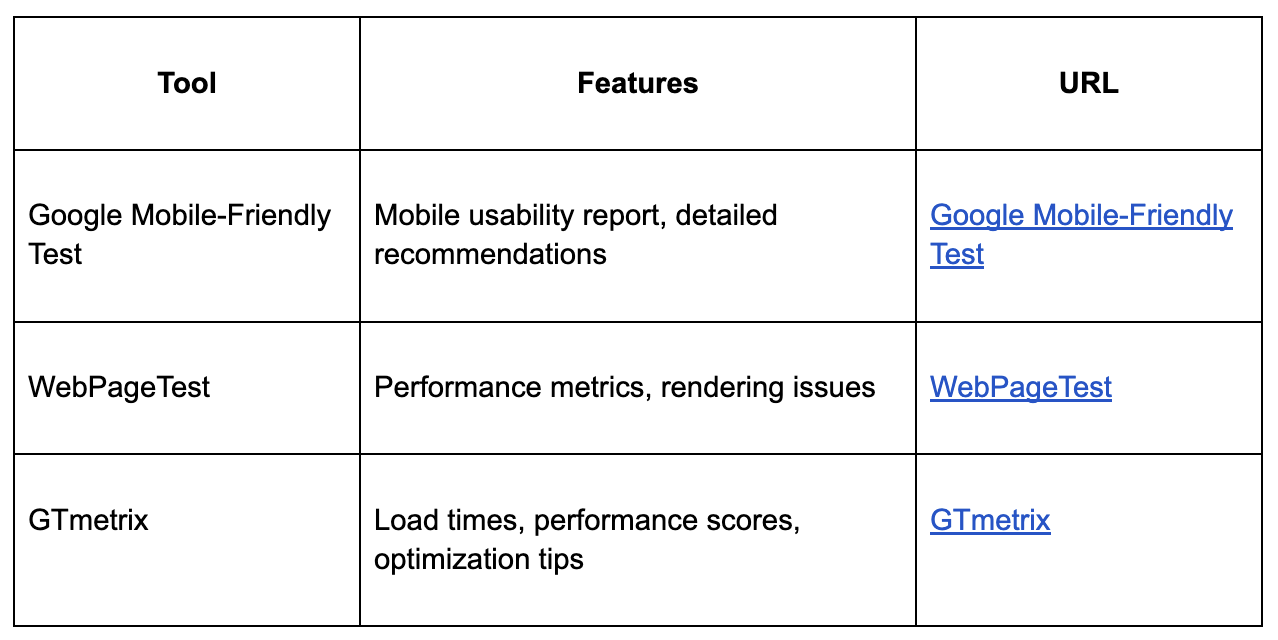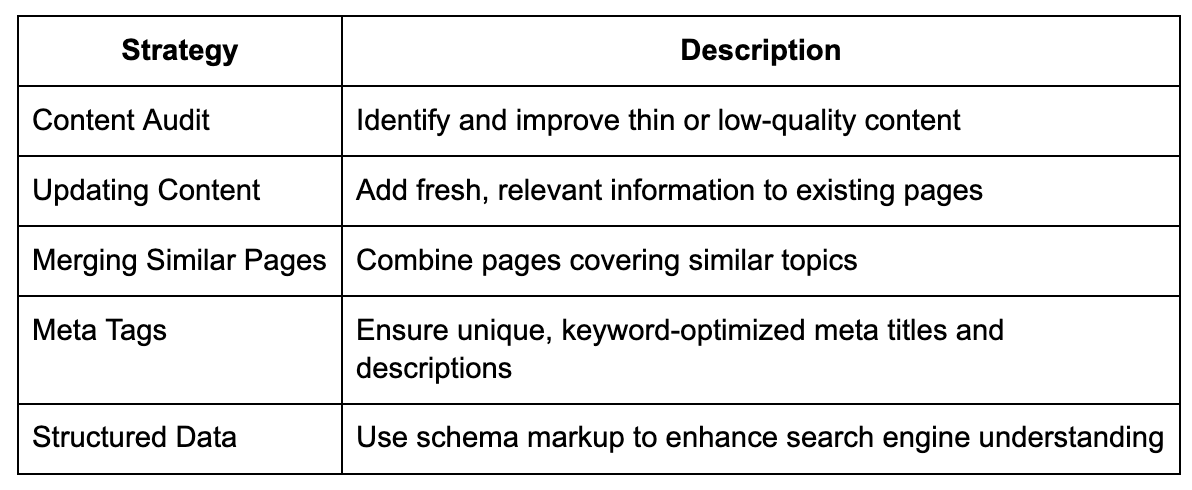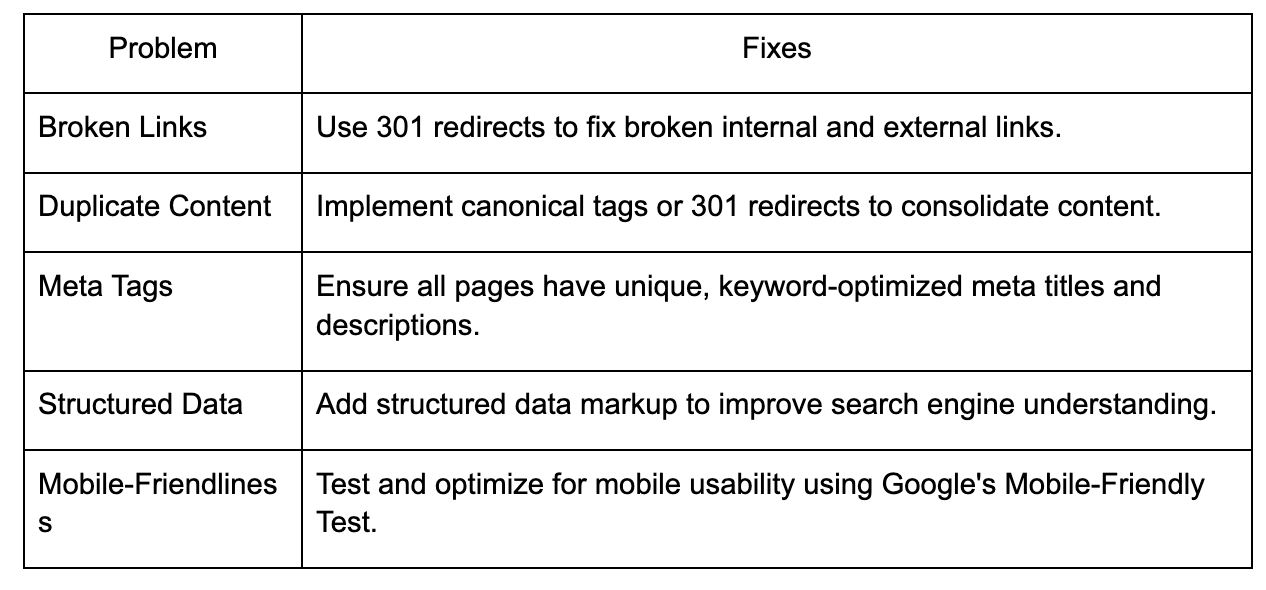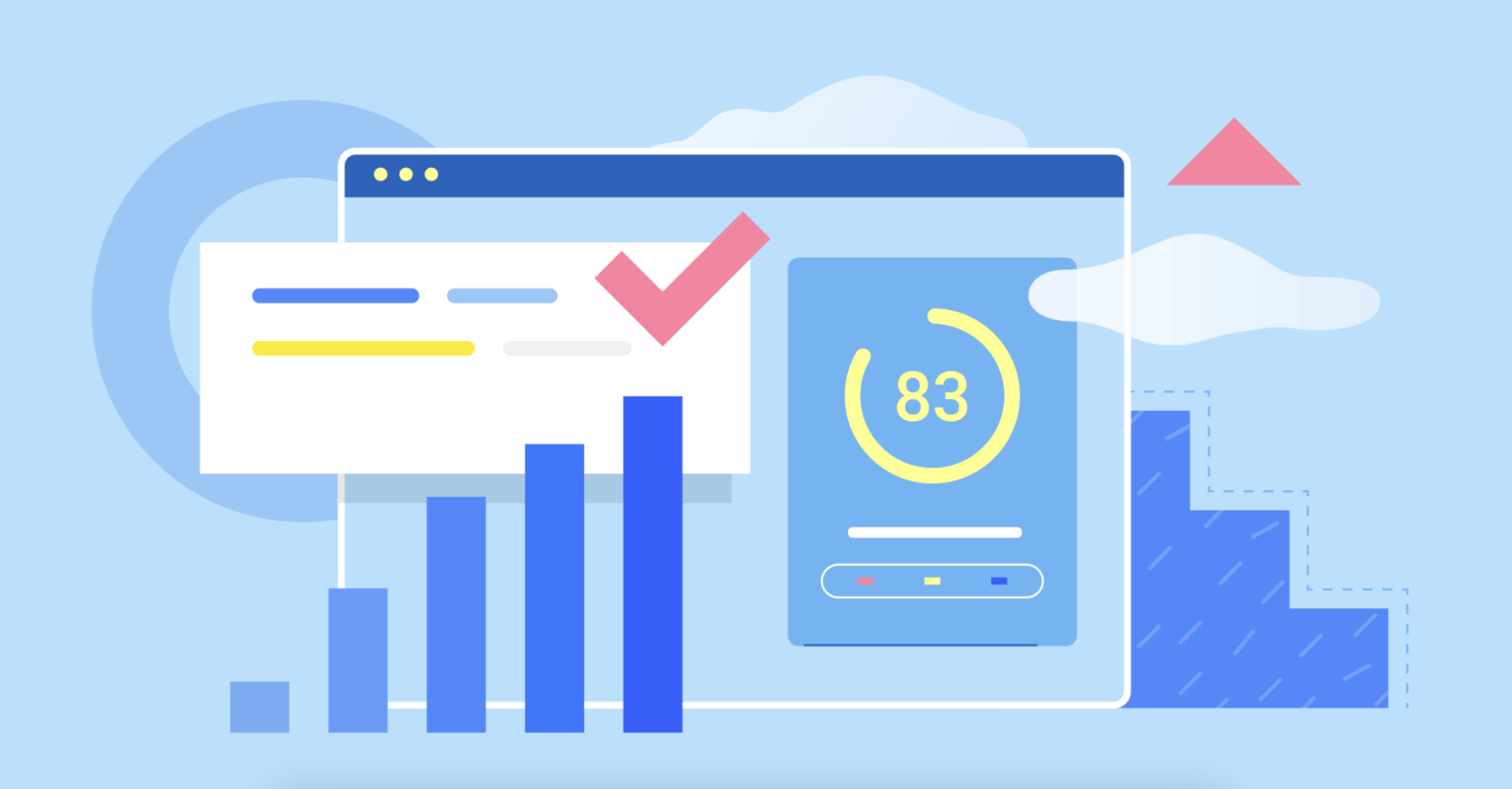Technical SEO Audit: 5-Step Guide For 2024

Need help with low search rankings and poor website performance? Many websites face challenges like slow page speed, broken links, and indexing issues that hinder their visibility. A comprehensive technical SEO audit can identify and fix these problems, ensuring search engines can effectively crawl and index your site. This article will guide you through a step-by-step process to enhance your website's crawlability, indexing, and overall optimization. By following Raffle Leader's expert advice, you'll enhance your site's performance, boost search rankings, and provide a better user experience.
What is an SEO Audit?
An SEO audit is a comprehensive evaluation of your website to ensure it meets the best practices for search engine optimization. It involves analyzing various technical aspects of your site, including crawlability, indexing, and page speed, to identify and resolve issues that might be affecting your search engine rankings. Key elements of an SEO audit include examining the site's URL structure, internal linking, and navigation hierarchy. Tools like Google Search Console and Screaming Frog are essential for identifying orphan pages, broken links, and duplicate content. Additionally, an SEO audit assesses mobile-friendliness, checks robots.txt, and sitemaps, and evaluates the use of meta tags and structured data. By conducting a thorough SEO audit, you can improve your website's server response time, implement effective caching strategies, and ensure proper canonicalization and redirects, ultimately enhancing your site's visibility and performance.
5-Step Guide for Technical SEO Audit
Improving your website's search engine performance requires a detailed examination of its technical aspects. This guide provides a straightforward, step-by-step process to identify and fix issues affecting your site's visibility and user experience.
Step 1: Crawl Your Website
The first step in a technical SEO audit is to crawl your website using specialized tools. Crawling your site helps identify issues that may prevent search engines from correctly accessing and indexing your content.
Choosing Crawling Tools
Several crawling tools are available, each with different features. Here are some popular options:
- Screaming Frog SEO Spider: A desktop application that crawls websites and generates reports. The free version crawls up to 500 URLs, making it suitable for smaller websites.
- Ahrefs Site Audit: A web-based tool that provides site audits, including crawling, indexability checks, and issue identification. Ahrefs offers a free trial and paid plans.
- DeepCrawl: A cloud-based platform designed for larger websites and enterprises. It offers advanced features like JavaScript rendering and log file analysis.
Take into account the size, needs, and budget of your website when choosing a crawling tool. The free version of Screaming Frog might be adequate for smaller websites, but more complicated or larger websites might benefit from paying for tools like Ahrefs or DeepCrawl. 
Reviewing Site Structure and Navigation
After crawling your website, review the crawl data to assess your site's structure, URL organization, and navigation. Look for the following:
- Orphan Pages: Pages not linked from any other page on your site. These pages may be difficult for search engines to discover and index.
- Broken Links: Internal or external links that lead to non-existent or error pages. Broken links can negatively impact user experience and search engine crawlability.
- Crawl Depth: The number of clicks required to reach a page from the homepage. Ensure important pages are within a reasonable crawl depth (typically no more than 3-4 clicks away).
- URL Structure: Analyze your URL structure for consistency, readability, and keyword inclusion. Well-structured URLs can improve user experience and search engine understanding.
- Navigation Hierarchy: Review your site's navigation menus and internal linking structure. A logical hierarchy and clear navigation paths can enhance user experience and search engine crawlability.
By thoroughly reviewing the crawl data, you can identify areas for improvement in your site's structure and navigation. This will help to improve both the user experience and search engine visibility.
Step 2: Analyze Website Layout
To improve user experience and search engine rankings, it is essential to evaluate your website's layout. This involves checking mobile-friendliness, site hierarchy, navigation menus, breadcrumb navigation, and internal linking.
Testing Mobile-Friendliness
Ensuring your website is mobile-friendly is crucial as more users access the internet through mobile devices. A mobile-friendly site enhances user experience and boosts your search rankings. Use tools like Google’s Mobile-Friendly Test, WebPageTest, and GTmetrix to evaluate your site's performance on mobile devices. These tools will provide insights into load times, rendering issues, and overall usability on different screens. Comparison Table of Mobile-Friendliness Tools: 
Reviewing Site Hierarchy
Search engines and consumers alike need a well-structured site hierarchy. Examine your internal linking and navigation menus to make sure that critical pages are clearly marked and have a sensible arrangement. Make sure that your URL structure is logical and easy to navigate, and keep an eye out for orphan sites—pages that have no links to other pages. Checklist for Site Hierarchy:
- Ensure the main navigation includes links to key pages.
- Verify that the site structure follows a logical order.
- Check for and eliminate orphan pages.
- Maintain a clean and consistent URL structure.
Analyzing Navigation Menus
The navigation on your website should be simple and easy to use. Examine your menus to make sure vital pages are easily accessible. Good navigation makes it easier for users to discover what they need fast and makes it easier for search engines to index your website. Key Elements of Effective Navigation Menus:
- Include links to main categories and subcategories.
- Ensure links are descriptive and use relevant keywords.
- Test the navigation on both desktop and mobile devices.
Implementing Breadcrumb Navigation
Breadcrumb navigation helps users understand their location within your site and provides a clear path back to higher-level pages. This can enhance user experience and improve your site's crawlability. Benefits of Breadcrumb Navigation:
- Provides users with a clear navigational path.
- It helps search engines understand the site structure.
- Reduces bounce rates by improving site usability.
Checking Internal Linking
Internal linking is crucial for distributing link equity and aiding in the crawlability of your site. Review your internal links to ensure they effectively connect related content and guide users through your site. Internal Linking Best Practices:
- Use descriptive anchor text.
- Link to relevant content within your site.
- Ensure all important pages have internal links pointing to them.
- Avoid excessive use of internal links on a single page.
You may improve user experience and search engine visibility by methodically going over your website's layout, paying particular attention to mobile-friendliness, site hierarchy, navigation menus, breadcrumb navigation, and internal linking.
Step 3: Check Content Quality and Indexing
Ensuring your website has high-quality content and proper indexing is crucial for search engine visibility. This step involves identifying duplicate content, verifying that all necessary pages are indexed, and enhancing the overall quality of your content.
Dealing with Duplicate Content
Duplicate content can hurt your site's search rankings. To find and fix this issue:
- Use tools like Screaming Frog or Siteliner to scan your site for duplicate content.
- Check Google Search Console for any duplicate content warnings or errors.
- Search Google for site:yourdomain.com "unique content snippet" to find duplicate pages.
- Use canonical tags to specify the preferred version of a page for indexing.
- Set up 301 redirects to consolidate duplicate content onto a single URL.
- Update or remove thin, low-quality pages with minimal unique content.
Regularly checking for and addressing duplicate content helps search engines better understand your site's content and can improve rankings.
Verifying Indexing and Visibility
Ensuring your pages are properly indexed by search engines is crucial for visibility. Use Google Search Console's Index Coverage report to identify indexing issues and check for noindex tags or robots.txt directives that might block indexing. Additionally, verify that your internal linking structure supports efficient crawling and indexing of important pages. Checklist for Indexing and Visibility:
- Review the Index Coverage report in Google Search Console.
- Ensure noindex tags are only used on pages that should not be indexed.
- Check the robots.txt file for any disallow directives.
- Use the site:yourdomain.com operator in Google to see which pages are indexed.
Improving Content Quality
High-quality content is essential for maintaining good search engine rankings and providing value to users. Regularly audit your content to identify thin or low-quality pages. Update these pages with fresh, relevant content, or consider merging them with other pages if they cover similar topics. Ensure each page has unique, keyword-optimized metatags and uses structured data where appropriate. Content Quality Improvement Strategies:  By addressing duplicate content, verifying indexing, and improving content quality, you can significantly enhance your website's overall SEO performance.
By addressing duplicate content, verifying indexing, and improving content quality, you can significantly enhance your website's overall SEO performance.
Step 4: Improve Page Speed
Slow page loading times can hurt your search rankings and user experience. Users are less likely to wait for a slow website, leading to higher bounce rates. Improving your site's speed should be a top priority in your technical SEO audit.
Using Speed Testing Tools
To measure your site's performance and identify areas for optimization, use these speed-testing tools:
- Google PageSpeed Insights: This free Google tool evaluates your site's speed on mobile and desktop, providing a score out of 100 and recommendations for improvement.
- GTmetrix: Another free tool that analyzes your site's performance across various metrics, including PageSpeed Score, YSlow Score, and load times. It offers detailed reports and optimization suggestions.
- WebPageTest: This tool tests your site's performance from different locations, browsers, devices, and connection speeds, providing comprehensive data on various performance metrics.
These tools can help you identify bottlenecks, such as slow server response times, unoptimized images or scripts, and render-blocking resources that may be slowing down your site.
Applying Speed Optimizations
Once you've identified the areas for improvement, you can implement various techniques to enhance your site's page speed:
- Compress and optimize images and videos: Large media files can significantly slow down your site. Compress images and videos without sacrificing quality, and serve them in next-gen formats like WebP for better compression.
- Minify HTML, CSS, and JavaScript files: Remove unnecessary whitespace, comments, and formatting from your code to reduce file sizes and improve load times.
- Enable browser caching: Caching allows browsers to store static files locally, reducing the need to download them on subsequent visits, which can significantly improve load times for returning visitors.
- Use a Content Delivery Network (CDN): A CDN distributes your website's content across multiple servers worldwide, ensuring faster delivery to users based on their geographic location.
- Optimize fonts: Choose web-friendly, lightweight fonts and consider subsetting or using font loaders to improve performance.
- Implement code splitting and lazy loading: Load only the essential resources initially, and load the rest on-demand, reducing the initial page weight.
- Optimize server response times: Ensure your hosting environment is optimized for performance, consider upgrading to faster servers or using a more efficient web server software.
By consistently monitoring your site's page speed and implementing optimization techniques, you can improve both your search engine rankings and user experience, leading to higher engagement and conversions.
Step 5: Implement Technical SEO Improvements
In this step, we delve into implementing crucial technical SEO enhancements to bolster your website's performance. By addressing common issues and optimizing technical elements, you can enhance search engine visibility and user experience effectively.
Prioritize High-Impact Issues
Prioritizing the most crucial problems should always come first when making technical SEO changes. A site's performance can be affected by a number of factors, such as page value, ranking potential, issue severity, the technical effort needed, and user experience impact. Set priorities accordingly. Pay attention to pages that have a lot of traffic and potential for high rankings. Key Criteria for Prioritizing Issues:
- Page Value: Focus on pages that drive significant traffic or revenue.
- Ranking Potential: Prioritize pages that could achieve higher rankings with improvements.
- Issue Severity: Address severe issues like broken links and duplicate content first.
- Technical Effort: Consider the resources and time needed for each fix.
- User Experience Impact: Improve elements that directly affect user satisfaction.
Fix Technical SEO Problems
Once high-impact issues are identified, it’s time to implement fixes. Common technical SEO problems include broken links, duplicate content, improper meta tags, missing structured data, and mobile-friendliness issues. Use a systematic approach to resolve these issues, ensuring each problem is addressed effectively. Common Technical SEO Problems and Fixes: 
Optimize Technical Elements
Your website's technical components can significantly improve its SEO effectiveness. Pay special attention to HTTPS implementation, crawlability, indexability, and page speed optimization. To guarantee peak performance, routinely check technical components including your robots.txt file, XML sitemaps, server response times, and internal linking structure.
Technical SEO Optimization Checklist:
- Page Speed: Compress images, minify code, enable browser caching, and use a CDN to improve load times.
- Crawlability: Ensure your robots.txt file is correctly configured to allow search engines to crawl important pages.
- Indexability: Use Google Search Console to check index coverage and fix any indexing issues.
- HTTPS: Migrate to HTTPS to secure your website and improve rankings.
- Internal Linking: Improve internal links to ensure efficient distribution of link equity and crawlability.
You may significantly improve your website's exposure, user experience, and search engine rankings by methodically addressing high-impact issues first, resolving common SEO difficulties, and optimizing technical features.
Conclusion
Performing a technical SEO audit is vital for keeping your website healthy, visible, and ranking well in search engines. By following this 5-step guide, you can systematically identify and fix various technical issues that may be hurting your site's search performance.
- Crawl Your Website
Crawling your site with specialized tools helps uncover any obstacles preventing search engines from properly accessing and indexing your content.
- Analyze Website Layout
Evaluating your site's layout and structure allows you to optimize its hierarchy, navigation, and mobile-friendliness, providing a smooth user experience across devices.
- Check Content Quality and Indexing
Reviewing your content's quality and indexing status helps you detect and resolve issues like duplicate content, which can dilute your SEO efforts.
- Improve Page Speed
Faster-loading websites enhance user experience and contribute to better search rankings. Use speed testing tools to identify bottlenecks and implement optimization techniques like image compression, code minification, and browser caching.
- Implement SEO Improvements
Prioritize and fix high-impact issues first, addressing technical problems like broken links, duplicate content, and indexability issues. Ensure your website follows best practices for optimal search visibility. By regularly conducting technical SEO audits, you can stay ahead of potential issues and maintain an optimized website that delivers an excellent user experience while maximizing your organic search traffic and online visibility.


